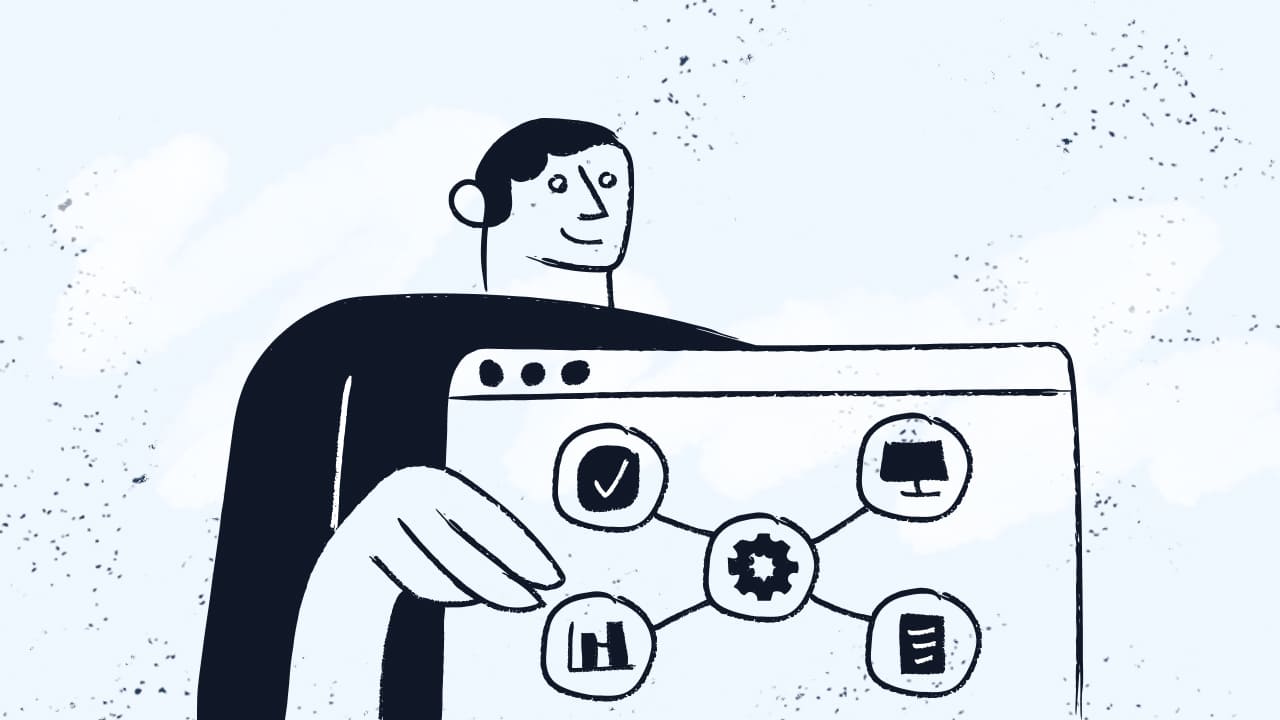Let’s talk about an old-school ITIL favorite: Service Asset and Configuration Management, or as the cool kids called it back in the day, SACM. Sure, it’s a term from the now-outdated ITIL v3 framework, but don’t let that fool you—it still has a lot to teach us. SACM is like the OG organizer of the IT world, managing your IT assets and Configuration Items (CIs) so everything runs smoothly.
Now, here’s the twist: with the introduction of ITIL 4, the concept didn’t disappear—it evolved. ITIL 4 swapped out the rigid processes of SACM for a more modern, flexible approach, splitting it into two powerhouse practices: Configuration Management (CM) and IT Asset Management (ITAM).
But why should you care about a process from ITIL’s history books? Because understanding SACM and its evolution helps us grasp the importance of managing IT assets and configurations in today’s dynamic environments. Whether you’re trying to streamline operations, tackle risks, or just keep your IT house in order, SACM’s principles are still a goldmine of best practices.
In this article, we’ll unpack what SACM was all about, explore how it transformed in ITIL 4, and—most importantly—break down why it’s still incredibly relevant for IT pros today. Let’s dive in!
What is Service Asset and Configuration Management?
Service Asset and Configuration Management is the ITIL v3 process that ensured your IT assets and Configuration Items were accounted for, tracked, and working harmoniously. Think of it as the ultimate organizer for all the moving parts in your IT infrastructure—hardware, software, data, and even documentation. The goal? To make sure everything you need to deliver reliable IT services is well-documented, controlled, and ready to go.
SACM made its debut in ITIL v3, which was first introduced in 2007 and later refreshed in 2011. Back then, it was part of the Service Transition stage, one of ITIL v3’s five core stages of the Service Lifecycle. In essence, SACM helped bridge the gap between the design and operation of IT services, ensuring no asset or configuration got lost in the shuffle.
But what was Service Transition, and why did SACM live there? Let’s break it down.
What was Service Transition in ITIL v3?
The Service Transition stage in ITIL v3 was all about taking freshly designed or updated services and successfully introducing them into a live environment. Picture it as the “deployment zone” where big plans turned into real-life implementations without crashing and burning.
Service Transition had several key steps, each designed to smooth out the move from theory to reality:
- Transition Planning and Support: Making sure the transition was well-planned and had enough resources to succeed.
- Change Management: Keeping track of all changes and ensuring they were made with minimal disruption.
- Service Asset and Configuration Management (SACM): Documenting and managing all assets and configurations involved in the service.
- Release and Deployment Management: Ensuring that new or updated services were released in a controlled way.
- Service Validation and Testing: Making sure everything worked as expected before going live.
- Knowledge Management: Collecting and sharing the knowledge needed for successful service operations.
SACM played a starring role here by ensuring all the assets and configurations needed for a service were accounted for, tracked, and ready to support smooth operations. It was the backbone of Service Transition, keeping everything organized and reliable.

Revisiting the original steps of Service Asset and Configuration Management
To understand how far we’ve come, it’s worth revisiting the original steps of Service Asset and Configuration Management (SACM). These steps formed the backbone of the process in ITIL v3, laying out a clear approach to managing assets and CIs. By examining them, we can see how they evolved to align with ITIL 4’s more flexible and modern practices.
If you’re curious about the bigger picture and the key differences between ITIL v3 and ITIL 4, don’t miss episode 38 of Ticket Volume - IT Podcast where we discuss the framework evolution: ITIL 3 vs ITIL 4.
Here’s a breakdown of the original steps of SACM and how they’ve been reimagined:
1. Planning SACM
This step focused on defining the scope, goals, and objectives of SACM. Organizations would plan how they would manage their assets and CIs, determine the required resources, and align the process with broader IT strategies.
This foundational planning step now integrates seamlessly with the Service Value System, emphasizing collaboration and adaptability. Configuration Management and IT Asset Management practices are scoped and planned in a more dynamic, iterative manner.
2. Identification of assets and CIs
Here, all service assets and CIs were identified and documented, along with their attributes and relationships. This step aimed to create a comprehensive inventory and lay the groundwork for effective management.
This has evolved into a more data-driven approach within the Configuration Management practice, leveraging tools like modern CMDBs and IT Asset Management systems for real-time updates and accuracy.

3. Control of assets and CIs
Control ensured that all assets and CIs were tracked and updated in line with changes, with strict processes to prevent unauthorized modifications.
The Change Enablement practice now takes a central role in managing changes to assets and CIs, supported by Configuration Management to ensure consistency and governance.
4. Status accounting and reporting
This step tracked the lifecycle status of assets and CIs, providing reports on their current state to support decision-making.
Lifecycle tracking is a key aspect of both Configuration Management and IT Asset Management, with an emphasis on automation and integration across tools to provide up-to-date, actionable insights.
5. Verification and audit
Periodic checks and audits ensured that the data within the SACM system was accurate, consistent, and aligned with reality.
Verification and audits are still essential, but they’re more streamlined through the Continual Improvement practice and automated validation features in tools supporting Configuration and Asset Management.
From SACM to modern IT practices: the evolution
ITIL 4 took the robust foundation of Service Asset and Configuration Management and gave it a much-needed makeover. Gone are the days of rigid, process-based thinking—today, the focus is on flexibility, automation, and integration. SACM has evolved into two complementary practices:
- Configuration Management: Managing the technical and operational details of Configuration Items.
- IT Asset Management: Overseeing the financial, contractual, and lifecycle aspects of IT assets.
Let’s break down what these practices look like now.

Configuration Management: the modern take
Configuration Management is the practice of identifying, managing, and maintaining information about the Configuration Items that make up your IT environment. It ensures that all the technical components—like servers, software, and network devices—are accounted for, their relationships are clearly understood, and their status is accurately tracked.
At the heart of this practice is the Configuration Management process, which provides a structured approach to identifying, controlling, and verifying CIs. This process is supported by a Configuration Management System (CMS), a suite of tools and databases that collect, store, and manage configuration data. One of the most essential components of this system is the Configuration Management Database (CMDB), which serves as a centralized repository for all CI information and their relationships.
In ITIL 4, Configuration Management has taken on a more dynamic role. Gone are the static lists and manual processes of the past. Instead, modern Configuration Management is all about:
- Real-time visibility: Leveraging advanced CMDBs within a robust Configuration Management system to keep CI data accurate and up-to-date at all times.
- Integration across practices: Playing a key role in Change Enablement, Incident Management, and Problem Management by providing reliable data through a well-structured Configuration Management process.
- Support for Agile and DevOps: Adapting to iterative environments where rapid changes are the norm, with the flexibility of a CMS ensuring seamless updates.
In today’s fast-paced IT landscape, a strong Configuration Management process, powered by a reliable Configuration Management system and a centralized Configuration Management Database, is critical for delivering seamless services, troubleshooting faster, and preventing risks before they escalate.
IT Asset Management: beyond technical details
IT Asset Management (ITAM) is the practice of managing the lifecycle, financial, and contractual aspects of IT assets, ensuring they are used efficiently and effectively throughout their lifespan. While SACM touched on assets, ITIL 4’s ITAM takes a more comprehensive and strategic approach.
Here’s how ITAM stands out today:
- Lifecycle Management: ITAM tracks assets from procurement to retirement, ensuring they’re optimized for cost and performance.
- Compliance and risk reduction: By managing licenses and contracts, ITAM helps organizations stay compliant and avoid unnecessary penalties or overspending.
- Data-driven decisions: ITAM provides critical insights for budgeting, forecasting, and increasing ROI on IT investments.
This practice ensures organizations not only get the most out of their assets but also align IT investments with their overall business goals—eliminating waste and maximizing value.
The intersection of Configuration Management and IT Asset Management
While ITIL 4 split Service Asset and Configuration Management into two distinct practices—CM and ITAM—their synergy remains vital to effective service delivery. These practices address different aspects of IT Management but work together seamlessly to provide accurate and reliable information that drives better decisions across the entire organization.
Here’s how these practices intersect to add value:
#1: Holistic visibility:
Together, Configuration Management and ITAM offer a comprehensive view of IT resources. Configuration Management tracks CIs, including their physical attributes and how they relate to one another, while ITAM focuses on their financial and contractual elements.
This integration supports better service Configuration Management, reducing service disruptions and improving planning across other processes like service design and incident resolution time.
#2: Enhanced Change Management process:
Configuration Management enables the Change Management process by providing configuration baselines and maintaining consistency in CI data. This ensures that changes are implemented in a controlled manner and all affected CIs are identified. ITAM complements this by ensuring compliance with contracts and licenses, avoiding quality and compliance issues during changes.
#3: Optimized resource utilization:
Configuration Management identifies underutilized or misconfigured CIs using discovery tools, while ITAM evaluates their financial value and lifecycle costs. For example, ITAM can assess whether older hardware is costing more in business money than it saves, helping organizations optimize resources effectively.
#4: Risk and Compliance Management:
By maintaining up-to-date status reports and engaging in regular audit processes, Configuration Management reduces operational risks, while ITAM helps manage license compliance and avoid penalties. Together, they tackle critical success factors like ensuring availability and reducing financial and operational risks.

#5: Defined roles and responsibilities:
Effective implementation of these practices requires clearly defined Configuration Management roles, such as the configuration manager and the process owner, who ensure the process objectives are met. For ITAM, roles like asset owners and financial managers contribute to managing compliance and optimizing investments.
#6: Integrated tools and systems:
Modern tools, like InvGate Asset Management, now integrate Configuration Management and ITAM functions, leveraging discovery tools, CMDBs, and IT asset tracking to create a unified platform. Features like the definitive media library (DML) further support consistency by housing all approved versions of software and related documentation.
#7: Measuring success:
To ensure alignment with business goals, both practices rely on Key Performance Indicators (KPIs), such as reducing incident resolution time, minimizing service disruptions, and maintaining compliance. These metrics help organizations measure success and demonstrate the value of these practices.

Final thoughts
While Service Asset and Configuration Management may belong to ITIL’s past, its principles are still the backbone of modern IT practices. The evolution into Configuration Management and IT Asset Management under ITIL 4 ensures organizations can stay agile while maintaining control and alignment with business goals.
In today’s complex IT environments, the need for accurate and reliable information is vital. From streamlining the Change Management process to reducing service disruptions, SACM’s legacy continues to drive smarter, more efficient IT operations. Its evolution reflects not just change, but true progress.
Frequently Asked Questions
1. What is the difference between CMDB and SACM?
A CMDB (Configuration Management Database) is a tool that stores information about CIs and their relationships, while SACM is the broader process that governs how assets and configurations are identified, controlled, and maintained.
2. What is the purpose of SACM?
The purpose of SACM is to provide accurate and reliable information about IT assets and CIs, ensuring consistency, reducing risks, and supporting decision-making in service management processes.
3. What is the best description of SACM?
SACM is the process of managing IT assets and CIs in a controlled and organized manner to ensure their availability, accuracy, and alignment with business needs.















